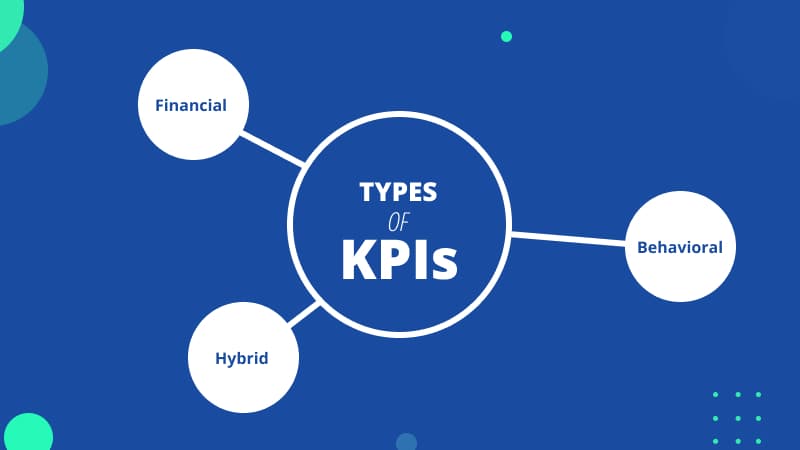In the dynamic world of iGaming, success depends on understanding key performance indicators (KPIs). For betting businesses to thrive, operators and software providers must track precise metrics that show where the company is headed and how effectively it's getting there. These metrics not only show where the company stands but also gauge the effectiveness of its strategies. By monitoring these key performance indicators (KPIs), businesses stay flexible and responsive to the rapidly changing online gaming environment.
Importance of KPIs in the Betting Industry
In today's business landscape, especially within the gambling industry, success revolves around Key Performance Indicators (KPIs). These metrics rely on the collection, storage, processing, and analysis of data. KPIs are typically categorized as strategic, operational, functional, or financial, each serving distinct purposes and operating within specific time frames. Understanding these categories empowers businesses to track the right metrics for informed decision-making and growth.
iGaming software providers play a crucial role in enabling operators to effectively track and utilize these KPIs. They offer robust platforms equipped with analytical tools tailored to the unique needs of the iGaming industry, ensuring operators can make data-driven decisions to enhance player experiences and drive business growth.
In the betting industry, executives rely on KPIs to ensure timely betting platforms, foster user loyalty, minimize churn rates, boost revenue, and achieve a return on investment. To accomplish these goals, KPIs must be well-structured, organized, and thoroughly processed. Regardless of the business model - whether starting from scratch or integrating sportsbook or casino software - detailed player data and behavioral insights are essential.
Categories of KPIs in the iGaming Sector

On the broad scale, KPIs in the iGaming sector are divided into three main categories:
- - Financial KPIs: Metrics related to monetary aspects such as revenue, profit, and return on investment.
- - Behavioral KPIs: Indicators that focus on user behavior and engagement, including retention rates and customer satisfaction.
- - Hybrid KPIs: Metrics that combine elements of both financial and behavioral indicators to provide a comprehensive understanding of business performance.
Financial KPIs in Detail
Financial KPIs serve as a means to assess and transparently report the financial health, balance, and profitability of the betting website. Within this category, the following criteria are included:
- Gross Gaming Revenue (GGR):
This metric indicates the total revenue of the betting business. It is calculated by subtracting the total sum of winnings from the total sum of wagers. GGR serves as a foundational element in assessing the financial performance of the online casino and the Sportsbook. It's important to note that GGR isn't a fixed figure and may vary from one period to another. The formula for calculating GGR is as follows:
GGR = Total Bets – Total Wins
For instance, let's say all your players bet $15 million in December, and they withdrew $10 million. So, your Gross Gaming Revenue (GGR) is simply the difference between the total bets and the total withdrawals, which is $5 million.
GGR = $15M - $10M
This figure provides valuable insights into the financial performance of the betting platform during that specific period.
- Net Gaming Revenue (NGR):
NGR represents a more comprehensive and realistic metric that reflects the actual earnings of the betting business. Unlike GGR, NGR considers various expenses beyond total bets and wins. It encompasses deductions for bonuses, commissions paid to payment systems, license fees, royalties, taxes, and other operational expenses. In essence, NGR represents the net, exact profit of the business. NGR-to-Deposits is a metric that shows how much revenue comes from player deposits. The higher the figure, the better for the business.
Let's imagine a betting platform's performance over the course of a month. During this time, players placed bets totaling $20 million, and the platform paid out $15 million in winnings. In addition to these payouts, the platform incurred various expenses: $2 million in bonuses, $1 million in commissions to payment systems, $500,000 in licensing fees, and $1.5 million in taxes and operational costs.
To calculate the Net Gaming Revenue (NGR), we subtract all expenses from the gross revenue:
NGR=(TotalBets−TotalWins)−(Bonuses+Commissions+LicenseFees+Taxes+OperationalCosts)
NGR = ($20M - $15M) - ($2M + $1M + $0.5M + $1.5M)
NGR = $5M - $5M = $0
In this example, the Net Gaming Revenue (NGR) is $0, indicating that the platform broke even during that specific period. This metric provides a clear picture of the actual earnings and profitability of the betting business, considering all expenses incurred.
- Bets-to-Deposits:
Bets-to-Deposits ratio indicates the turnover of deposited funds in games. A high ratio suggests that the casino may be offering too many bonuses, potentially impacting its profitability. This metric essentially illustrates the level of player engagement and activity within a given period.
Let's illustrate this with an example: Imagine a casino platform operates over a month-long period. During this time, players collectively wagered $80,000 in total bets, while the total amount of deposits made by players was $120,000.
To calculate the Bets-to-Deposits ratio, we divide the total bets by the total deposits:
Bets to Deposits = Total Bets / Total Deposits
Using our example figures:
Bets to Deposits = $80,000 / $120,000 = 0.67
In this scenario, the resulting Bets-to-Deposits ratio of 0.67 indicates that for every $1 deposited by players, approximately $0.67 worth of bets were placed. This insight provides operators with valuable information about player engagement and the efficiency of their bonus systems. A high Bets-to-Deposits ratio could indicate excessive bonus giveaways, potentially impacting the casino's profitability. Therefore, monitoring and optimizing this metric is crucial for maintaining a balanced and sustainable gaming environment.
Behavioral KPIs and User Engagement
Behavioral or People Related KPIs are essential metrics used to uncover the behavioral patterns of players, making them vital for ongoing improvement of the betting website. These metrics play a key role in fostering user loyalty and encouraging high levels of use engagement.
- Conversion Rate:
Conversion Rate measures and illustrates the number of users who align with the casino's objectives. It encompasses visitors, registered users, and depositors who engage in desired actions on the website, such as clicking on ads, opening emails, and making deposits. This metric serves as a gauge of the effectiveness of promotional activities and advertising efforts on the website.
- Player Lifetime Value (LTV):
Player Lifetime Value (LTV) is a crucial indicator of a player'sloyalty to the website, reflecting both the time spent on the platform and the total revenue generated during that period. It serves as a foundational element for a successful betting platform and requires continual monitoring and enhancement. To boost LTV, efforts should focus on increasing player retention and reducing churn rates on the betting website.
Learn more about What is LTV in Gambling.
- Retention Rate:
Retention rate is the percentage of players who continue to engage with a particular betting platform over a specified period of time.
- Churn Rate:
Churn Rate is the rate at which players stop using the platform and leave it over the given period of time.
Thus, Retention and Churn Rate measures the balance between players who persist in betting and those who have left the platform. Typically assessed every 3, 6, or 12 months, these metrics offer insights into the loyalty levels of players. If the numbers are high, it might mean additional measures need to be taken. This could include improving the platform, giving out more bonuses, or adding new features to keep bettors interested and stop them from leaving.
Hybrid KPIs and Business Performance
Hybrid KPIs connect financial and user-related metrics.
- Average Revenue per User (ARPU):
Average Revenue per User (ARPU) is used to calculate the average income generated from registered players who bet on the platform.
- Cost per Acquisition (CPA):
Cost per Acquisition (CPA) reveals the total expenses incurred by the casino in acquiring new players to register, sign up, and start depositing on the platform. This metric further illustrates the effectiveness of the platform's marketing strategy.
Given the importance of the measurements and analytics described above, special attention must be paid to the systems that carry out these functions effectively. One of the most effective modern systems for ensuring smooth operations, based on a deep understanding of customer engagement and demands, is the Customer Relationship Management (CRM) system. Many platforms rely on this system to measure KPIs and improve the performance of the betting platform further.
In Conclusion
In summary, tracking these crucial KPIs is vital for every iGaming company striving for success in 2024 and beyond. By understanding and leveraging these metrics, companies can adapt to the evolving landscape of online gaming, enhance user experience, and drive steady growth. Embracing data-driven insights and investing in effective systems like Customer Relationship Management (CRM) ensures ongoing improvement and competitiveness in the dynamic world of iGaming.



